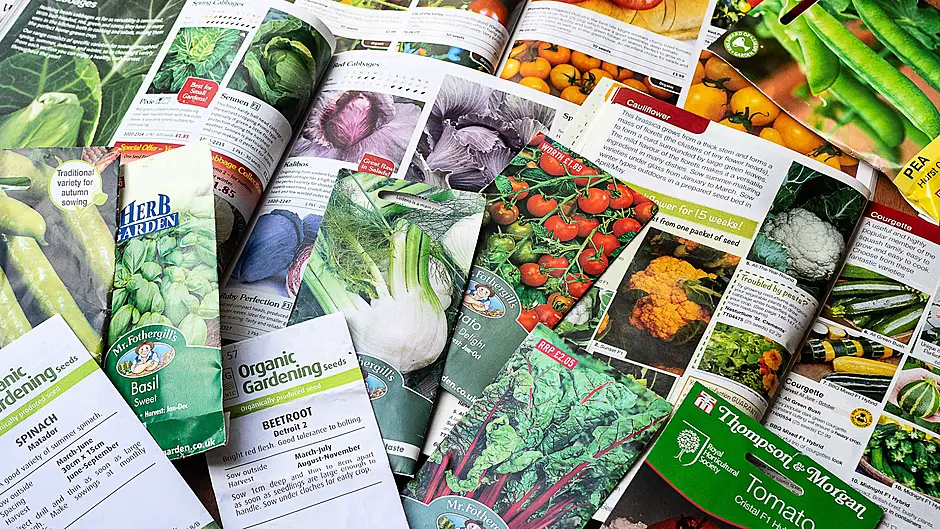BY JOYCE RUSSELL
A NEW year is with us and that can bring lots of hope. Things may not always go the way you think that they will, but there’s something about drawing a line under one year and moving on to the next, that always brings some sense of optimism.
Make the most of this feeling when you think about the garden. Plan and dream for a while and then start to get organised.
Dig over empty beds: If the weather is good and soil is reasonably dry then the next few weeks are a good time to get out and get digging. Add some feed to dig in while you are at it. You may not plant anything for a while, but it gives great satisfaction to have some of the ground work done. You can look at a dug bed in a different way and this helps you plan what you want to grow in it.
Buy some seeds: Take a look at what seeds you already have and think about new ones that you might need. Most seed companies have online lists so you can browse that way if it suits you. Some companies still produce printed seed catalogues. You might have to pay a few euros for each one, but they are a pleasure to look through and make your choices.
Buy tools: If Santa didn’t bring you the garden tool that you really want, then treat yourself and think how it will make work easier for the rest of the year. Good tools don’t always make a good gardener, but they certainly help – most will last many years so don’t always go for the cheapest option.
Buy gardening aids: If you need new pots, a hosepipe, compost, seaweed feed, or bamboo canes, then start a list and buy these things when you see them in garden centres and stores. And you may need some organic approved slug pellets ( these work well for protecting most small seedlings).
Check fruit and vegetable stores
Take a look at carrots, parsnips, pumpkins, potatoes, onions etc, that are in your shed or vegetable store. One bad item can affect others around it and you don’t want to lose what you have carefully grown.
Chutneys made in the autumn will have a great flavour now and jams bring a wonderful taste of summer fruits. There can be a wealth of treasures in the freezer too. This is the time of year when stores really come into their own. Dive in and use them with abandon and don’t let the hoarding spirit get the better of you. Stores can provide plenty of variety through the next few months – there’s no point storing things so long that they deteriorate or until new crops come in to make older ones redundant.
Pick spinach
Perpetual spinach will keep growing lots of large leaves through a mild autumn and early winter. This is a productive and useful resource, but one that is probably best used in cooked dishes like spinach dahl, or spinach quiche, where the texture of the leaves is less important.
‘True’ spinach will grow slowly through the winter and leaves should be picked while small. These are more tender than perpetual spinach, making them ideal for salads or as a lightly cooked topping to risotto or pasta. Spinach is a great addition to any winter menu, but remember that overcooking can lead to more water than solid material.
Pick one or two leaves from each plant as you work along a row. Don’t strip a plant and leave growing points intact so they can grow more leaves. Spinach plants in a greenhouse or polytunnel can keep cropping through until May. Outdoor ones will often finish sooner.
A word on the weather
It’s always hard to predict what the weather will be like for the first months of the year. We may get a mild and damp spell or we may get severe frost. If we are to get snow, then January and February are the most likely months. Having said that we can all think of occasions when snow has arrived much later.
Most plants in the garden should be able to survive an average winter. If you do spot a severe cold snap in the forecast then it is worth wrapping vulnerable plants in horticultural fleece, or covering them with a cloche, to give a little protection.
If we get a heavy fall of snow, that is likely to last more than a day, it’s a good idea to clear the tops of covers and cloches – this ensures that light isn’t restricted for plants underneath for too long. A heavy layer of snow can break leaves and stems – try to clear any plants that are suffering.








